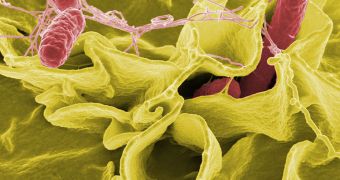Scientists from the University of Leeds say that electrodes coated in bacteria can be used to make electricity. The microorganisms can use either light or hydrogen as fuel, and produce electrical current as a result. This power can then be harnessed for practical applications.
What experts want to do is be able to create efficient biofuel cells that would utilize bacteria as a medium for producing electricity. These cells will come in handy in situations and scenarios where batteries are not available, or cannot be recharged.
Using a £1.42 million ($2.29 million) grant from the European Research Council, investigators at Leeds decided to focus their efforts on bacterial enzymes. These molecules can use light or hydrogen gas to produce electricity, unlike molecules in other biofuel cells, which use glucose as a power source.
The research is being led by expert Dr. Lars Jeuken, who holds an appointment with the Faculty of Biological Sciences at the University of Leeds. He is a scientist at the Interdisciplinary Center for Microbial Fuel Cells (ICMFC), at the Universities of Leeds, Sheffield and York.
“Technology that creates an electrical signal from a biochemical reaction is already in commercial use, for example in blood glucose biosensors. However, developing an efficient biofuel cell that can create sufficient electricity for general use has proved much more difficult,” the expert says.
“This is mainly because the systems developed to date have only limited control of how inorganic materials and biological molecules interact,” he goes on to say. Jeuken adds that the new study combines advanced concepts from several fields of research.
These include surface physics, colloid and organic chemistry, membrane biology and electrochemistry. The goal is to create electrodes that can exert total control on the biochemical interactions that need to go on inside the biofuel cell so that the latter can produce energy.
If these devices can be inserted into membrane proteins, then bacteria could become capable of using light or hydrogen gas for electricity generation. At this point, there is no way of knowing when this technology will be brought to the market.
In the field of microbial fuel cell research, there is currently a trend towards using a combination of synthetic biology and nanoengineering to obtain more advanced devices. The new Center will attempt to do the same.

 14 DAY TRIAL //
14 DAY TRIAL //